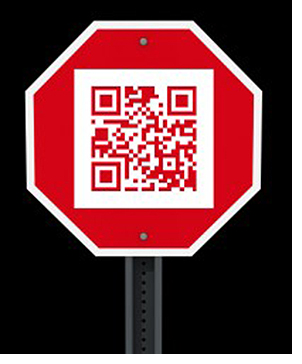The world is embracing the use of Quick Response Codes, better known as QR codes. They seem to be popping up everywhere. As smartphones become more common (there are approximately 100 million being used in the United States alone) consumers are using QR codes to access information, and to access it immediately. If you are creating QR codes for your campaign or promotion, it’s important to address key QR code specifications to make sure your code will work.
There are the four critical QR code specifications you need to address before you publish your QR code:
1. QR Code Size
In the case of QR codes, size does matter so make sure yours is large enough to be scanned. Because camera features vary across phone brands, not all phones can properly focus small QR codes. Blackberries, in particular, have cameras that do not auto focus. This causes problems when trying to scan a smaller QR code. Droids and iPhones, however, have superior cameras that are able to read smaller codes. To be on the safe side, we recommend a QR code size of at least 1.5” by 1.5.”
 2. White Space
2. White Space
It is necessary to surround your QR code with enough white space for scanning devices to detect the boundaries of the code. Generally, the rule of thumb is that the gutter (white space) should be about 5 dots, which are the size of the dots in the QR code. As a bonus, this white space will also make your QR code pop on the page and get noticed.
3. Paper Selection
Give some thought to the finish of the paper that the code will be printed on. If the paper has any type of coating, it could cause a glare. If the glare is too reflective, smartphones may not be able to read the code. Also, consider where the code will be scanned. For example, if it will be on a tag in a retail store, the combination of reflective, glossy paper and bright, florescent lights could prevent your code from scanning.
4. Placement
Give some thought to where your QR code will appear. If the code is placed on something that could bend or wrinkle, it might not scan. A good example of this would be placing a code in a magazine. Although this is the perfect vehicle for your QR code, make sure the code is close to the outside of the page and away from the binding, or it will not lay flat for scanning. Generally, QR codes can withstand approximately 30% distortion. However, the more information the QR code contains, the denser it is, and the less leeway there is for distortion.
A QR code can be one of the most valuable things you can include in your campaign, promotion or ad. Interested customers are led directly to your relevant mobile content, all with a simple scan of a QR code. So make yours count by addressing key QR code requirements. Make it large enough to scan, surround it with white space, print it on paper with minimum glare and place it where it lay flat and smooth. And finally, test your QR codes before releasing them to your audience. Best practices dictate that you test the QR codes with the top three leading phone brands: Blackberry, iPhone, and Droid prior to release. With these QR code guidelines in mind, you’re more prepared to get started and create QR codes for your campaigns and promotions. If you have used QR codes in the past, what has worked or not worked for you? What are some considerations you would suggest?
* For more information on how to use QR codes effectively, sign-up for QR Code Tips and Tricks.*

